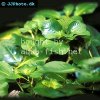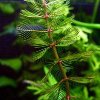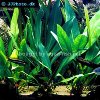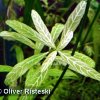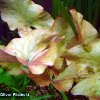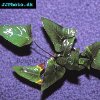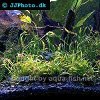Building natural planted aquariums
Quick navigation
Introduction
Aquariums come in many shapes and sizes, some are designed using décor with ornaments that are based on castles, cartoon characters and suchlike but for an outstanding look to the finished tank there can be no substitute for a natural planted aquarium that has been designed by the owner with natural décor and live plants.
These too can take many forms and everyone that has been set up will look totally different to the next but they all have the same theme, recreating a part of nature in our homes. They make a perfect haven for any livestock added and with general tank maintenance can give hours of pleasure to any one viewing the final result.
There are several basic steps that need to be followed to be successful in these sort of projects but they are easy to follow and mostly common sense but none the less getting these right at the start will ensure that the finished project will last without any major problems, once the tank is set up dealing with problems can be difficult so better to get it right initially.
Step 1 - Planning your aquarium
As with all projects forward planning will help you greatly with your project, plan where you are placing your aquarium, how large the aquarium is that you are going to use and the position that you will be placing it in the room. Larger aquariums are easier to control than smaller ones as the larger water volume means more stability, place your aquarium out of direct sunlight and always allow for room to perform tank maintenance. Ensure that you have an adequate power supply and that all of the equipment that is going to be used in the aquarium is in good working order, this is mostly the heater if required and your filtration system, lighting must also be adequate with a planted tank but we will cover that in more detail further on. These basic steps appear many times in a lot of articles but they are important.
Many owners will draw a plan on paper so that they have the finished result sketched in front of them, this prevents you from drifting away from the original idea and keeps you on course for a final finished effect. At this stage it is also a good idea to hunt out some reliable aquatic plant suppliers so that their contact numbers are ready at hand when you wish to order the plants.
Step 2 - Adding your Substrate
Once you are happy with your design and all of the planning has been done it is time to rinse out the aquarium and check for leaks, this is best done outside just in case. If you are using a cleaning agent such as sterilising fluid to clean the aquarium make sure that it is well rinsed out, if the tank passes the leak test then position it in the room on top of a sturdy cabinet or base and the substrate can now be added after it too has been rinsed thoroughly. The substrate can be either sand or fine gravel, the choice is yours but many plants are root feeders so at this stage it is best to add some form of aquatic compost or commercial medium that will supply your plants with nutrients. Flourite is often used but there are other products such as Tetra complete plant substrate which are ideal. The sand or gravel has to be placed on top of this to prevent it from leaching all of the nutrients into the water column, too many nutrients will bring on an algal bloom. The layer of substrate should be no more than 2” deep so that it does not compact and trap gases that are harmful to any future livestock that you will be adding. Compaction can also restrict root growth in the plants so not too deep and not too shallow is the correct method. Try to slope the substrate so that it is deepest at the rear of the tank, not only does this look more natural but it will also persuade the detritus to go forwards in the aquarium making it easier to remove.
Step 3 - Adding the décor
We are now getting to the fun part of adding some décor to the aquarium, the only way in my eyes to make the aquarium look natural is to use rocks or wood, if you do decide to use wood test it to make sure that it will sink, some of the best pieces of wood can be very frustrating as they always float to the top of the tank. This can be overcome easily by glueing some small rocks underneath the wood and burying these in the substrate. Try to add the décor in a random fashion, if using rocks create small piles and lean rocks onto these to look like they have fallen there, if using wood place it in an irregular fashion, there is no place for symmetry in a natural planted aquarium. Attaching plants such as Anubias or Java fern can help to soften the edges of the décor, as these grow and attach themselves properly by their roots they will look like they have been there for years. Once the décor is added stand back and have a good look at the aquarium, make sure that the effect has been achieved and if there is anything that you are not happy with rearrange the aquarium until the décor looks exactly as you want it. Once all of this is in place you are ready to add the plants. Taller plants need to be added to the background working down the heights so that the smaller plants always end up at the front. All plants sold will have their maximum height when mature on their profile so use this information to decide on your planting scheme. Often adding a few inches of water at this stage can help with the planting process but take your time and bury the roots in the substrate carefully so that you do not damage them. Many plants are used for their carpet effect, Riccia fluitans being one of the most popular, these will grow over the décor like a carpet and spread over time, I have yet to see anything that looks more natural than this effect.
Often it is hard to imagine how the aquarium will look eventually once the plants are first added but believe me if they receive the correct nutrients and lighting they will soon grow and start to overtake the tank, pruning is a major part of maintenance with natural planted aquariums.
If you are happy with the décor and planting the tank can be filled to the correct waterline and left for a few days to settle down. Livestock cannot be added straight away as the tank will need to be cycled but I know of many planted tank keepers that never bothered any livestock at all and most that have just add a few fish to create movement in the aquarium, the plants take the centre stage not the fish.
Most plants photosynthesise and feed from the lighting, some species of plants are not so dependant on this but the general rule is to allow 2 watts of lighting per gallon of water in the aquarium, this means that a 50 gallon aquarium requires 100 watts of lighting and so on, this is just a general rule and some plants may need brighter lighting than others, yet again all of this information can be found on each species profiles.
